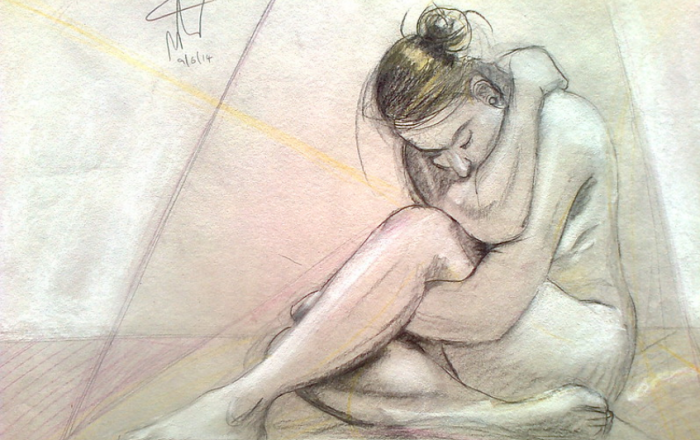“Happy new year, Momma,” I said.
I could feel the knot welling up in my throat. “I love you. I’m sending you the biggest virtual hug right now.”
Mom’s on the opposite coast; way too far for a hug. She’s a feisty, funny, amazing woman, and she was been alone in her apartment throughout COVID. Rather than letting my heart break thinking about her lack of connection, I’m writing this blog.
I love you, Mom.
You know about that oxytocin fix 20-seconds of hugging someone will provide? What about when you’re flying solo and the hug-less moments are getting to you, you’re feeling lonely, and you need some lovin’, like now?
Here are five ways to hug and be hugged that do not require another human:
We are going to survive this. And when the restrictions are lifted, I suggest some organized hug-fests. For now, let’s get as close as possible without killing anyone.
1. Visualize it.
Visualization is used by pro athletes to enhance performance and win gold medals. Believe me, it will work for a hug. That’s because the brain doesn’t know the difference between an experience you’re having in your mind, and the one you’re actually having. So why not let that experience be one, awesome, long-ass hug?
Go ahead, find a comfortable spot, close your eyes, and imagine the best possible hug from someone you love. Visualizing is more than just seeing the scene in your mind’s eye. It’s about experiencing the sensations. Feel the skin contact, the warmth, the threads of their winter sweater, the smell of their perfume or cologne, the way their arms feel on your back. Hey, I said your back! Keep it clean, jellybean.
Visualization is a powerful form of meditation where you get to choose the scene with your awareness. This brings you into a powerful state of consciousness that the folks who teach the Law of Attraction know will create your reality. So don’t be surprised if when COVID is over you have a line of callers at your door waiting for that hug.
2. Go ahead and be all talk.
Now that you understand how powerful visualizing a hug is, get on the phone and talk to someone you love through that same hug. You can both partake. Ask the receiver of your hug to find a comfortable position and close their eyes. I’ve done short versions of this for my friends when they are going through really tough times, but why save this treat for only then?
“Feel my arms wrapping around your back and the sides of our faces touching. Can you feel my squeeze? I’m wearing Love Spell, by Victoria’s Secret, can you smell it? It smells like cotton candy. Feel the soft fleece on my sweater? I’m still hugging, don’t let go…”
I always finish by saying, “Thank you for that amazing hug, I needed it!” Don’t be surprised if some tears are released. This is powerful stuff.
3. Give your heart a little release.
One of the most powerful self-healing techniques I learned in physical therapy school was the sternal release. This is a myofascial release tool we teach clients to perform on themselves when they have tightness or pain in or around the neck, shoulders, chest, or upper back. The cool thing about this technique is it releases all the structures deep underneath your hands, including the heart.
>> Sit in a comfortable position and place your dominant hand over your upper chest with the thumb and forefinger touching your collar bones, and the rest of the palm gently connecting with the chest.
>> Place the other hand over the first hand and allow the arms and hands to relax and soften over the skin.
>> Take several deep, relaxing breaths as you allow your hands to sink into the body.
>> Maintain a gentle inward pressure with your hands and add downward pressure on the skin, away from your chin, until you feel the slack of the skin stop or tighten. Don’t slide over the skin. Just maintain gentle pressure for about three to five minutes.
>> When the connective tissue under your hands begins to release, maintain gentle pressure, and take up the slack with your hands. You might feel warmth, softening, stretching, tingling, or pulling. The idea is to relax the head, neck, and shoulders as much as you can while you gently hold the stretch.
>> I always add a little positive self-talk while I do my releases like, “I love you, you badass.”
4. Wrap yourself up in a weighted blanket.
Weighted blankets are used for children and adults (and even animals) who suffer from disorders like anxiety, autism, and insomnia. The weight in the blanket simulates deep pressure on the body. Your body has special sensors in each joint called proprioceptors, which pick up on that pressure, similar to how you know you’re being hugged.
Weighted blankets are considered “therapy” for some, providing positive physiological changes that increase mind-body calm.
5. Pet your pet.
If you have a pet and you’re forgetting to take advantage of that love, let me be your reminder. Petting your pet is a releaser of those same feel-good chemicals as the hug. Have you ever intentionally started a petting session with your furry friend?
For some extra love, lie down for this one and if the pet fits, allow them to lie on your chest while you do the petting. Enjoy the moment by feeling their fur, watching their eyes, listening to their sounds, and smiling when they ask for more.
If your pet is small and you’re holding them in your arms, you may even feel the love as they put their head down on your shoulder, or their paws around your neck and give you their version of a hug. Or a kiss with their licks. Animals are amazing souls that come with health benefits. If you take your blood pressure during your love-fest, you might see that it goes down!
I leave you with this; we will hug again. And those hugs will be filled with a different energy, won’t they? We’ve had a chance for a deeper understanding of what truly matters. And when that energy can be given freely in the form of a hug again, whoa, watch out world!
~











Read 26 comments and reply